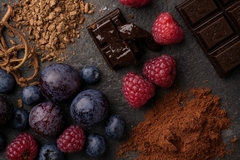Energy Drink Ingredients Can Affect Our Bodies
“What is taurine?” That’s a good question when the one-upmanship in the energy-drink business has spawned a product named Cocaine and a new brand of coffee bean called Meth Coffee.
30/05/07 Tim McCullen drinks his morning pick-me-up at 3 p.m. Instead of black coffee, McCullen, who tends bar at The Goat in Raleigh, N.C., downs a couple of energy drinks when he reports for a shift that doesn’t end till the wee hours.
McCullen, 29, said this somewhat sheepishly. He answered “unfortunately” when first asked if he drinks energy beverages, and wondered whether all that caffeine and whatnot packed into them is healthy.
“Really,” he asked, “what is taurine?”
That’s a good question when the one-upmanship in the energy-drink business has spawned a product named Cocaine and a new brand of coffee bean called Meth Coffee. Energy drinks are filled with ingredients such as taurine and L-camitine and D-ribose, the kinds of substances most need Google to decipher. Outside the energy derived from caffeine — an 8.4-ounce can of Cocaine contains 280 milligrams of caffeine, while a cup of coffee might have 80 to 100 milligrams — the people drinking them don’t know much about how these beverages affect their bodies.
As it turns out, the scientists don’t have all the answers, either.
Taurine, if you were wondering, is a nonessential amino acid purported to boost energy. Given the Latin root “taurus,” you could say that taurine put the “bull” in Red Bull, the company that introduced U.S. consumers to energy drinks. Many energy beverages include taurine in their formulas.
http://redding.com/news/2007/apr/27/edgy-names-overshadow-energy-drink-ingredients/

















